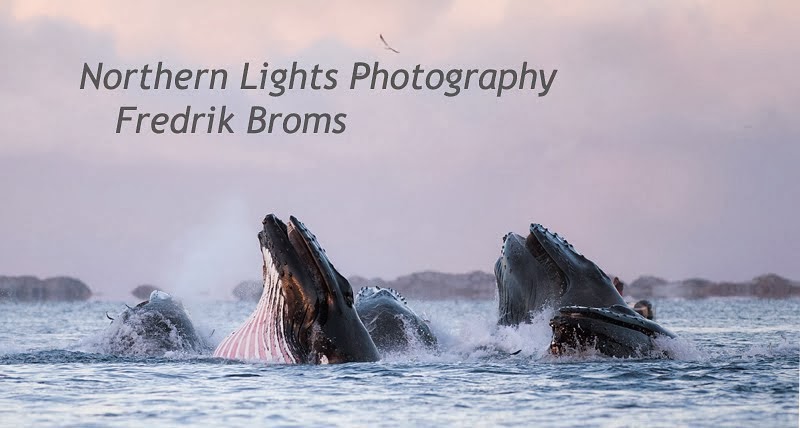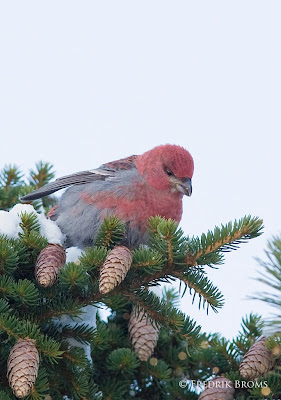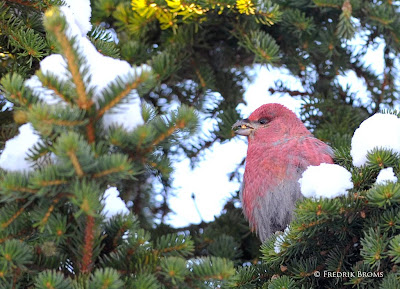Lately, the activity of the sun has increased dramatically, and as a result, spectacular auroras have been seen around the Arctic circle. Tonight, the solar wind hit the upper atmosphere of the Earth, and despite an almost full Moon that drowned out some of the lights, brilliant auroras could be seen dancing over the winter landscape.
Since the aurora activity is very strongly coupled to the activity on the Sun, I wanted to try to see if I could image our closest star, with only my small pocket camera at hand, and indeed, several large sunspots could be seen.
The big sunspot (called 1158) poses a 20% threat for Earth-directed X-flares according to experts (a flare being an explosion on the Sun happening when energy stored in twisted magnetic fields (i.e. usually above sunspots) is suddenly released. The "X" stands for the highest category in the scale of solar flares, meaning a major event that may trigger long-lasting radiation storms. Indeed, the X-flare from sunspot 1158 has unleashed the strongest solar flare in 4 years, so anyone interested in northern lights should be alert for more auroras in the nights to come, as a coronal mass ejection (CME) seems to be on its way to Earth.
Solar cycle 24 is starting to get really interesting and hopefully February/March will be full of northern lights!
I also want to add the warning that cannot be repeated to often: NEVER EVER look at the Sun without proper protection - DO NOT look at the Sun with your naked eyes and not through any kind of optical instrument. Looking at the Sun will damage your eyes permanently.
Since the aurora activity is very strongly coupled to the activity on the Sun, I wanted to try to see if I could image our closest star, with only my small pocket camera at hand, and indeed, several large sunspots could be seen.
The big sunspot (called 1158) poses a 20% threat for Earth-directed X-flares according to experts (a flare being an explosion on the Sun happening when energy stored in twisted magnetic fields (i.e. usually above sunspots) is suddenly released. The "X" stands for the highest category in the scale of solar flares, meaning a major event that may trigger long-lasting radiation storms. Indeed, the X-flare from sunspot 1158 has unleashed the strongest solar flare in 4 years, so anyone interested in northern lights should be alert for more auroras in the nights to come, as a coronal mass ejection (CME) seems to be on its way to Earth.
Solar cycle 24 is starting to get really interesting and hopefully February/March will be full of northern lights!
I also want to add the warning that cannot be repeated to often: NEVER EVER look at the Sun without proper protection - DO NOT look at the Sun with your naked eyes and not through any kind of optical instrument. Looking at the Sun will damage your eyes permanently.

Large sunspots can now be seen on the Sun






